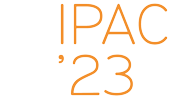Speaker
Description
At DELTA, a 1.5-GeV synchrotron radiation source at TU Dortmund University, ultrashort radiation pulses are generated using CHG (coherent harmonic generation), where the interaction with laser pulses in an undulator (modulator) causes a periodic electron energy modulation within a 50-fs slice of a 2000-times longer electron bunch. A dispersive chicane creates a density modulation giving rise to the coherent emission of ultrashort pulses at harmonics of the seed pulse in a second undulator (radiator) exceeding the incoherent background from the whole bunch. In summer 2022, the electromagnetic insertion device U250, which included both undulators and the chicane, was reconfigured to demonstrate EEHG (echo-enabled harmonic generation, originally proposed for linac-based free-electron lasers) at a storage ring and to reach higher harmonics. The U250 coils were rewired to create two modulators for a twofold laser-electron interaction, two chicanes to manipulate the electron density, and the radiator, each comprising only a few undulator periods. The two seeds are a frequency-doubled Ti:sapphire laser pulse at 400 nm and its residual at 800 nm wavelength. EEHG pulses are detected using an in-vacuum grating spectrometer. In addition, the coherent emission of THz radiation is monitored. The paper presents first results of this project termed SPEED (Short-Pulse Emission via Echo at DELTA) which, to our knowledge, is the worldwide first attempt to perform EEHG at a storage ring.
Funding Agency
Funded by DFG (contract INST212/236-1 FUGG), BMBF (contract 05K19PEB) and by the Federal State NRW.
| I have read and accept the Privacy Policy Statement | Yes |
|---|

